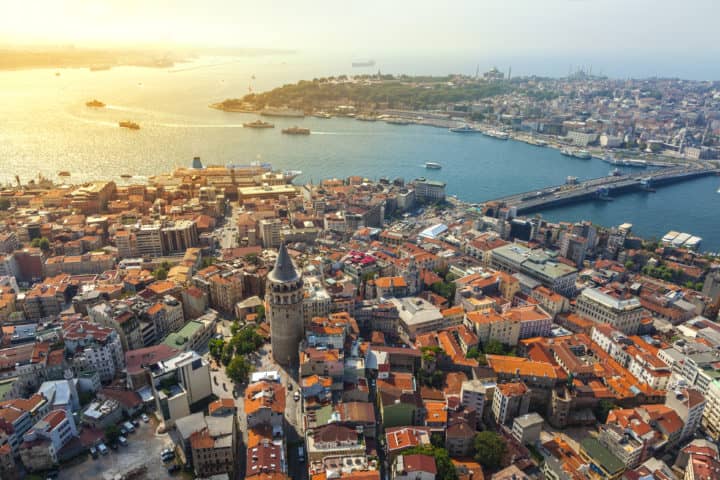 The Turkish city of Istanbul has an intriguing history. Originally known as Lygos and later rechristened Byzantium, the city was renamed Constantinople in the year 324. In 1930 Turkish law declared that the city would officially be called Istanbul. However, despite this law many people, including members of the Eastern Orthodox Church, still refer to the city by the name Constantinople. However, it is no longer officially listed with that name. Here’s a brief history of this city:
The Turkish city of Istanbul has an intriguing history. Originally known as Lygos and later rechristened Byzantium, the city was renamed Constantinople in the year 324. In 1930 Turkish law declared that the city would officially be called Istanbul. However, despite this law many people, including members of the Eastern Orthodox Church, still refer to the city by the name Constantinople. However, it is no longer officially listed with that name. Here’s a brief history of this city:
Named After Emperor Constantine
Ruled by and named after Emperor Constantine, the city of Constantinople was chosen as the capital of the Roman empire due to its ideal location. Easy to defend and more centrally located within the empire itself, Constantinople was the perfect location for the new capital. The city was designed from the very beginning to function as a center of government. Constantine promised distributions of land and food to those who would help build the city he envisioned. Divided into 14 regions like it’s Roman counterpart, a new senate house, ceremonial suite, Hippodrome, and other official government structures were built within the city.
As the city passed from emperor to emperor tremendous changes were made. After tremendous losses in the battle of Adrianople in 378 the city built triple enforced walls that were 60 feet high to defend the city. The walls were such an effective defense they were impregnable until the invention of gunpowder in the 1000’s.
Christianity Experienced a Split
In the mid-500’s the city was under the rule of Emperor Justinian. During his reign Christianity was splitting into two separate factions based on their understanding of the human nature of Jesus Christ and how that affected their religious identity. These two groups attached their religious quarrels to the deeply politicized sport of horse racing. After many years of disagreements the fighting turned into a massive rebellion known as the Nika riots. The riots destroyed the Hagia Sofia. The Justinian period was also marked by a terrible plague that killed 40% of the city’s inhabitants.
In the early 700’s Emperor Leo III declared a ban on religious images, beginning what was known as the iconoclast movement. During this movement one of the churches was turned into a fruit store and aviary while religious images and icons were burned, destroyed, or painted over because they were considered graven images. After the emperor died the ban was overturned by Empress Irene. The movement was brought back briefly in the 9th century only to be overturned again, this time by Empress Theodora.
Due to a series of civil wars and other disasters in the late 11th century much of the overall empire was lost, but shortly thereafter the empire underwent a remarkable recovery. The city saw a revival of the arts and significant economic prosperity. The era of prosperity lasted only a few hundred years, after which the city was captured by Michael VIII Palaiologos and subsequently conquered by the Ottomans in 1453. The city was rebuilt as a Muslim community but people of many religions were encouraged to settle there.
The most populous city in Turkey, Istanbul continues to be a cultural powerhouse in the world today. Seen as a setting in books, movies, and video games, the historical and cultural importance of Constantinople will never be forgotten.
Source:

